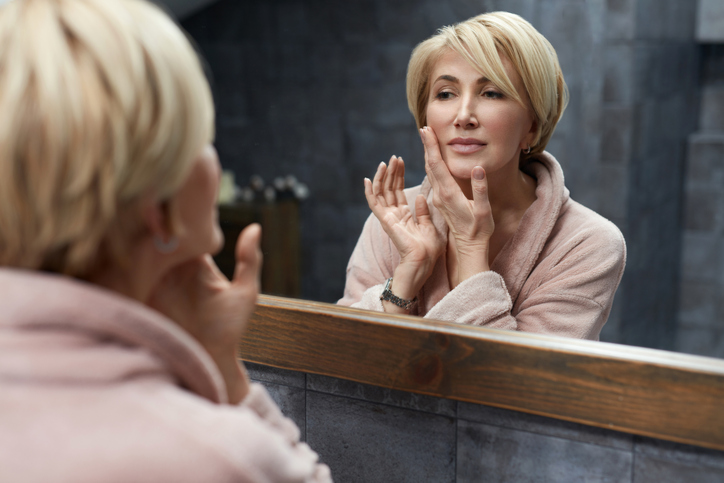Facial Hair Help
Noticing an increase in hair on your skin, or a change in its thickness or colour?

Along with the hot flushes and unwanted weight gain there can also come a change in your facial and head hair.
Ironically your eyebrows get thinner, due to falling oestrogen levels and raised androgens and low progesterone around the menopause, but you also start growing hair.
Unfortunately it is not long, glossy and on your head, but tends to be of the strong, wiry type on your chin or upper lip and that is more difficult to deal with.
What causes it?
We are back to our old friend hormone balance as it is related to oestrogen dominance, the decline of progesterone and the rise in production of male hormones known as androgens.
These stimulate facial hair growth, especially on the chin, and there is also a genetic component if there is a previous history of this in the women in your family.
Treatment options
The first sight of a hair sends most of us straight to the tweezers, wax or to a beautician for electrolysis. Certainly the occasional one can be plucked and despite the old wives tales, it won’t grow back any thicker.
For most of us the first thought is to just get rid of it and there are a number of options for this.
Basically if you are starting to have a number of wiry hairs on your face you may want to think about waxing, depilation or epilators or for a long-lasting solution laser treatment is effective.
However it can take from 4-19 treatments so isn’t a cheap option, and not suitable for women whose facial hair is grey or white as the laser can’t identify those hairs.
In that case electrolysis will be better for you, but it can be uncomfortable and again will need a number of treatments. Do make sure with both laser and electrolysis that you find a properly trained practitioner and a certified clinic.
If you are also seeing hair growth from your ears, which is less common, it is vital that you never try to pluck those hairs. You can damage the delicate ear canal by causing small nicks that lead to infection, so use grooming scissors with rounded tips or a trimmer with a nose and ear hair attachment.
4 ways to deal with it more naturally
Virtually all women have some fine, hardly visible fine hair on their faces but at menopause it suddenly seems to be much more prominent. Also it is in places we may never have seen it before, but there are some simple ways to tackle it.
1 Fluctuating hormones are often the cause so ensuring you have got that right is the certainly the first step.
Oestrogen dominance has a number of effects so rebalancing will help with your other menopausal symptoms as well.
2 A diet that is low in white carbohydrates (such as white bread/pasta/flour products) can help to prevent unwanted hair growth.
This is because high glycaemic foods such as white flour products raise blood sugar, which in turn increases insulin levels.
Raised insulin is responsible for the production of too many androgens. A low-GI diet is healthy in many ways and can also help you lose weight.
3 Low tech solutions are either to use cold wax strips as these are gentler on the skin than hot wax exfoliation, or bleach the hairs so they are less noticeable.
4 Drinking spearmint tea twice a day can help too as it reduces androgens and so leads to less hair growth.
Helpful information:
If hormone imbalance is behind your facial hair, then you need to address that first by checking for symptoms of oestrogen dominance and increased testosterone production – both of which are common at menopause.
Rebalancing with bioidentical progesterone, Serenity cream, will help reduce the androgen production but remember that there may also be a genetic predisposition as well.
Did you know that your diet can also help you if you are dealing with oestrogen dominance? This article will tell you more.
https://anna.blog.wellsprings-health.com/the-diet-to-help-beat-oestrogen-dominance/


















